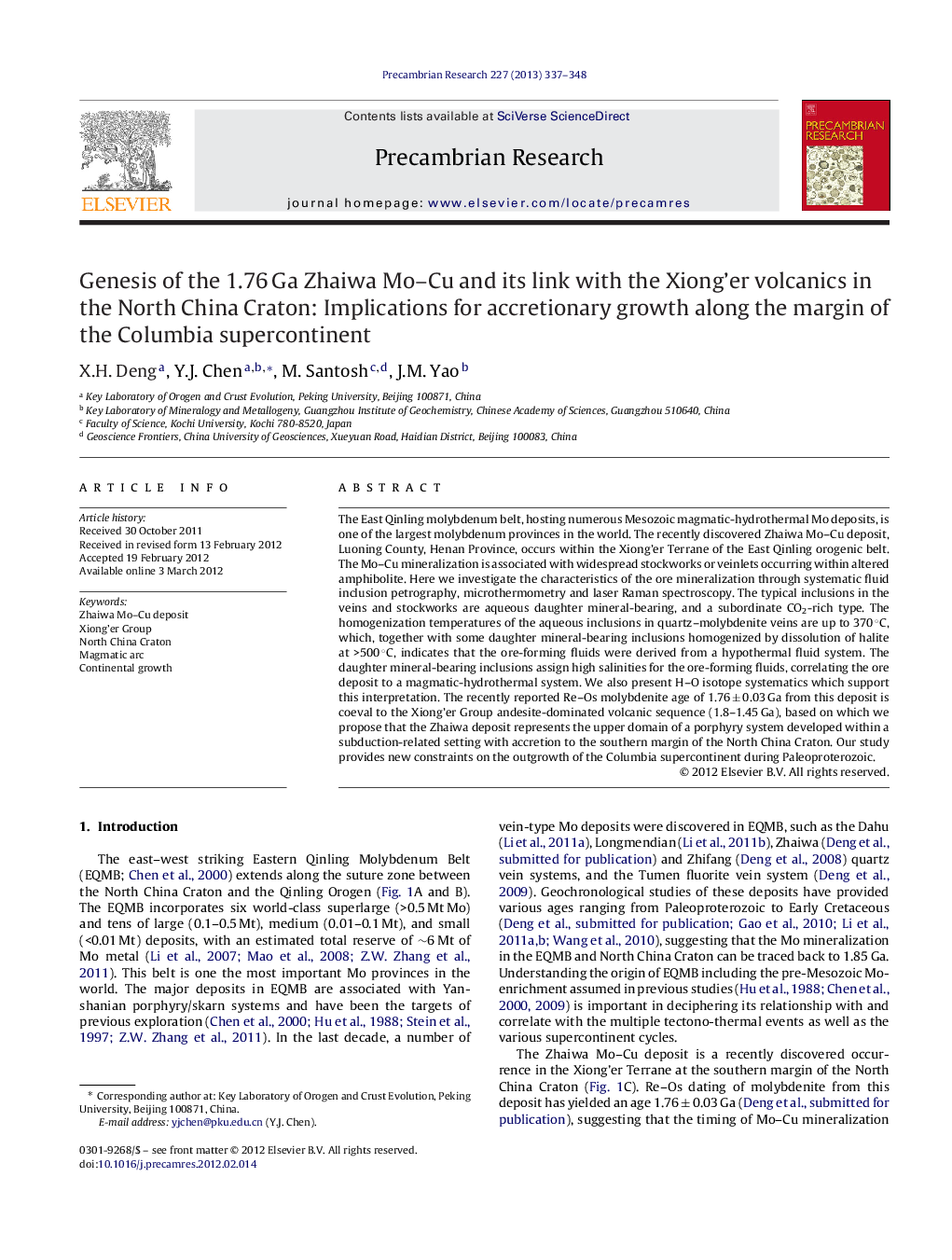| Article ID | Journal | Published Year | Pages | File Type |
|---|---|---|---|---|
| 4723408 | Precambrian Research | 2013 | 12 Pages |
The East Qinling molybdenum belt, hosting numerous Mesozoic magmatic-hydrothermal Mo deposits, is one of the largest molybdenum provinces in the world. The recently discovered Zhaiwa Mo–Cu deposit, Luoning County, Henan Province, occurs within the Xiong’er Terrane of the East Qinling orogenic belt. The Mo–Cu mineralization is associated with widespread stockworks or veinlets occurring within altered amphibolite. Here we investigate the characteristics of the ore mineralization through systematic fluid inclusion petrography, microthermometry and laser Raman spectroscopy. The typical inclusions in the veins and stockworks are aqueous daughter mineral-bearing, and a subordinate CO2-rich type. The homogenization temperatures of the aqueous inclusions in quartz–molybdenite veins are up to 370 °C, which, together with some daughter mineral-bearing inclusions homogenized by dissolution of halite at >500 °C, indicates that the ore-forming fluids were derived from a hypothermal fluid system. The daughter mineral-bearing inclusions assign high salinities for the ore-forming fluids, correlating the ore deposit to a magmatic-hydrothermal system. We also present H–O isotope systematics which support this interpretation. The recently reported Re–Os molybdenite age of 1.76 ± 0.03 Ga from this deposit is coeval to the Xiong’er Group andesite-dominated volcanic sequence (1.8–1.45 Ga), based on which we propose that the Zhaiwa deposit represents the upper domain of a porphyry system developed within a subduction-related setting with accretion to the southern margin of the North China Craton. Our study provides new constraints on the outgrowth of the Columbia supercontinent during Paleoproterozoic.
► The Zhaiwa Mo–Cu veins are upper branches of a porphyry mineral system. ► Mo–Cu mineralization at Zhaiwa occurred in a continental arc at ∼1.76 Ga. ► The southern margin of North China Craton was a continental arc at ∼1.76 Ga. ► The Xiong’er Group volcanic rocks developed on a continental arc. ► Mineral system is a useful probe to study continental outgrowth.
